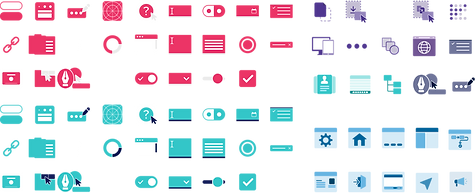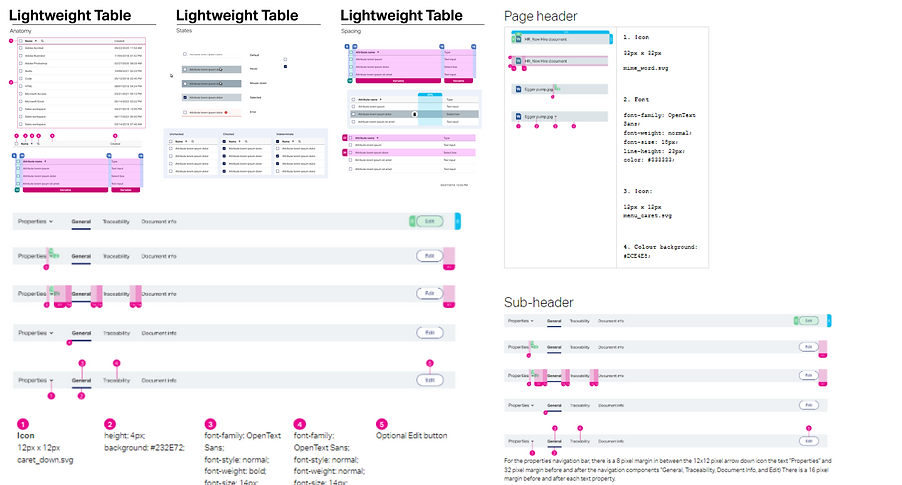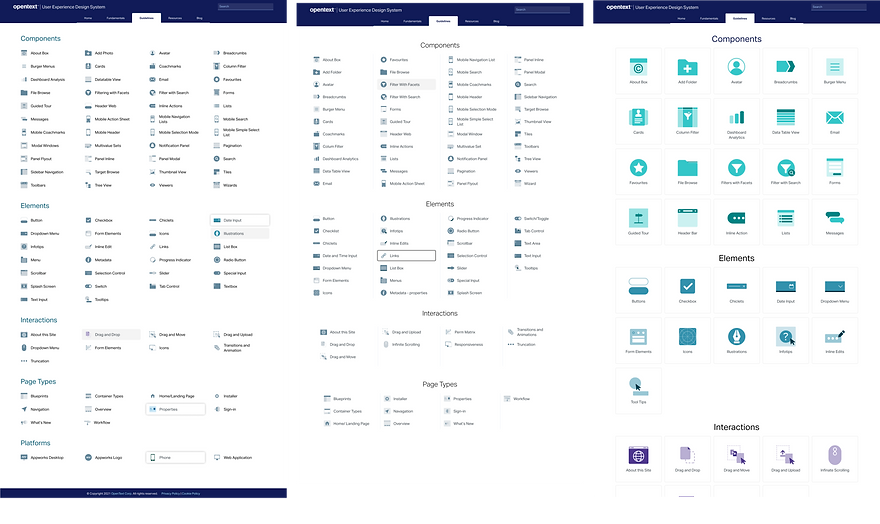OPENTEXT
UX/UI Visual Designer @
Opentext is a large, global company with a diverse range of digital products, including websites, mobile apps, and software tools. The company's design team consisted of over 100 designers working on various products, with different design languages and approaches. This led to inconsistencies in the user experience and inefficiencies in the design process.

My Role
Design Systems
Wireframing / Mockups
Presentation
User Flows
As a design systems designer at Opentext, my role was to create and implement a unified design system that would provide consistency and efficiency across all of the company's digital products. I also provided multiple design learning sessions for the senior designers at the company going over Figma features.
Project Overview
The objective of the project was to create a comprehensive design system that would provide a consistent look and feel across all of Opentext digital products, while also enabling designers to work more efficiently and collaboratively. This case study outlines the process and challenges involved in creating the design system, as well as the benefits and impact it had on the company's design team and products.
Led Figma Technical Tools Tutorial Sessions for Senior Designers

Methodology
Research & Analysis: I conducted internal research to understand the company's design needs, challenges, and goals, as well as the latest trends and best practices in design systems at other companies. This included online evaluation of designs, design systems and application developments, as well as a review of existing design assets and guidelines.


Definition & Scope: I defined the scope and objectives of the design system, including its target products, audience, and principles. I also identified the key components and elements that would need to be included in the system, such as colors, typography, icons, buttons, and forms.



Design & Development: I worked with a team of designers to create the design system, using a modular and flexible approach that would allow for easy updates and customization. This included creating design specifications, templates, and libraries for the various components and elements.



Implementation & Testing: I led the implementation of the design system across the company's products, working closely with designers, developers, and product managers. I also conducted user testing through multiple levels of iterations to ensure the design system provided a consistent and intuitive user experience.


Key Benefits & Impacts
The design system was successfully implemented across all of Opentext’s digital products, providing consistency and efficiency in the design process. Some of the key benefits and impact of the design system included...
Improved UX
The design system ensured a consistent and cohesive user experience across all of the company's products, making it easier for users to navigate and use the products.
Increased Efficiency
The design system provided a set of reusable components and templates, allowing designers to work faster and more efficiently. This reduced the time and effort spent on designing and developing individual products.
Enhanced Collaboration
The design system enabled designers to work more closely and collaboratively, sharing and building upon each other's work. This improved communication and coordination within the design team.
Conclusion
Conclusion
Overall, the creation and implementation of the design system at Opentext had a significant positive impact on the company's design team and products. The design system provided consistency, efficiency, and collaboration, and helped improve the user experience of the company's digital products.
